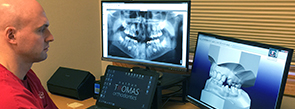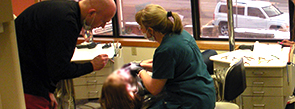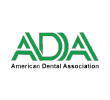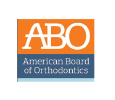 We want to make you smile.
We want to make you smile.Is Orthodontic Treatment for You?
For most people, a beautiful smile is the most obvious benefit of orthodontics. After your braces come off, you'll feel more self-confident. During your treatment, we want you to feel as comfortable as possible.
Check out our Before & After patient results on our portfolio page. 

Why Braces?

If you recognize any of these signs or concerns in your child or yourself, it might be time to schedule a consultation with an orthodontist.
- You want a beautiful smile
- You want the best for your family
- Early or late loss of baby teeth
- Difficulty chewing or biting
- Crowded, misplaced or blocked-out teeth
- Jaws that shift, make sounds, protrude or are recessed
- Speech difficulty
- Biting the cheek or biting into the roof of the mouth
- Protruding teeth
- Teeth meet in an abnormal way or don't meet at all
- Grinding or clenching of teeth
- Inability to comfortably close lips mylifemysmile.org
How Orthodontic Treatment Works

Orthodontic appliances can be made of metal, ceramic, or plastic. They may be removable or they may be brackets bonded to the teeth. By placing a constant, gentle force in a carefully controlled direction, braces slowly move teeth to a corrected position. This is a great time to wear braces! Gone are the days when a metal band with a bracket was placed around each tooth. You can choose brackets that are clear or metallic color. You can choose the color of the ties that hold the wire in brackets. Wires are also less noticeable than they used to be and the latest materials move teeth faster with less discomfort to patients.
Duration of Treatment

Treatment time typically ranges from one to three years, depending on the growth of the patient's mouth and face and the severity of the problem. Patients grow at different rates and will respond variously to orthodontic treatment, so the time to case completion may differ from the original estimate. The patient's diligent use of any prescribed rubber bands or headgear is an important factor in achieving the most efficient treatment. Interceptive, or early treatment procedures, may take as few as six months.
Types of Orthodontic Treatment

All patients have individual conditions, concerns and needs. We offer many different orthodontic treatments such as Invisalign®, Acceledent™, SmartClup™, Incognito™ and Forsus™.
See for yourself what these advanced treatments can accomplish.
Click on the icons below to learn about each.
Orthodontics for Children

It's best for the orthodontist to see children by age seven to advise if orthodontic treatment is required and it is the best time for that patient to be treated. The first permanent molars and incisors have usually come in by that time and crossbites, crowding, and other problems can be evaluated. When treatment is begun early, the orthodontist can guide the growth of the jaw and guide incoming permanent teeth. Early treatment can also regulate the width of the upper and lower dental arches, gain space for permanent teeth, avoid the need for permanent tooth extractions, reduce likelihood of impacted permanent teeth, correct thumb-sucking, and eliminate abnormal swallowing or speech problems. In other words, early treatment can simplify later treatment.
Orthodontics for Adults

Orthodontic treatment can be very successful at any age and adults especially appreciate the benefits of a beautiful smile. One of every five patients in orthodontic treatment is over 21. In most cases, treating an adult is the same as treating a child.
At your consultation we will examine the teeth, gums and bone to determine if your dental health is adequate to start orthodontic treatment. In some cases enamel wear and bone loss may limit the amount of movement we can achieve.
Some adult patients may be apprehensive to wearing metal braces. We can discuss cosmetic options to make orthodontic treatment work for you.
Two-Phase Orthodontic Treatment
Two-phase orthodontic treatment is a very specialized process that encompasses tooth straightening and physical, facial changes. The major advantage of a two-phase treatment is to maximize the opportunity to accomplish the ideal healthy, functional, aesthetic result that will remain stable throughout your life.
What if I put off treatment?
The disadvantage of waiting for complete eruption of permanent teeth and having only one phase of treatment for someone with a jaw discrepancy is facing the possibility of a compromised result that may not be stable.
First Phase Treatment
Your foundation for a lifetime of beautiful teeth.
The goal of first phase treatment is to develop the jaw size in order to accommodate all the permanent teeth and to relate the upper and lower jaws to each other. Children sometimes exhibit early signs of jaw problems as they grow and develop. An upper and lower jaw that is growing too much or not enough can be recognized at an early age. If children after age 6 are found to have this jaw discrepancy, they are candidates for early orthodontic treatment.
>>> See images and descriptons of the different appliances available during the first phase of orthodontic treatment.
Planning now can save your smile later
Because they are growing rapidly, children can benefit enormously from an early phase of orthodontic treatment utilizing appliances that direct the growth relationship of the upper and lower jaws. Thus, a good foundation can be established, providing adequate room for eruption of all permanent teeth. This early correction may prevent later removal of permanent teeth to correct overcrowding and/or surgical procedures to align the upper and lower jaws. Leaving such a condition untreated until all permanent teeth erupt could result in a jaw discrepancy too severe to achieve an ideal result with braces.
Making records to determine your unique treatment
Orthodontic records will be necessary to determine the type of appliances to be used, the duration of treatment time, and the frequency of visits. Records consist of models of the teeth, x-rays, and photographs.
Resting Period
In this phase, the remaining permanent teeth are allowed to erupt. Retaining devices are not usually recommended since they may interfere with eruption. It is best to allow the existing permanent teeth some freedom of movement while final eruption of teeth occurs. A successful first phase will have created room for teeth to find an eruption path. Otherwise, they may become impacted or severely displaced.
Monitoring your teeth's progress
In other words, at the end of the first phase of treatment, teeth are not in their final positions. This will be determined and accomplished in the second phase of treatment. Selective removal of certain primary (baby) teeth may be in the best interest of enhancing eruption during this resting phase. Therefore, periodic recall appointments for observation are necessary, usually on a six-month basis.
Second Phase Treatment
Stay healthy and look attractive
The goal of the second phase is to make sure each tooth has an exact location in the mouth where it is in harmony with the lips, cheeks, tongue, and other teeth. When this equilibrium is established, the teeth will function together properly.
Movement & Retention
At the beginning of the first phase, orthodontic records were made and a diagnosis and treatment plan established. Certain types of appliances were used in the first phase, as dictated by the problem. The second phase is initiated when all permanent teeth have erupted, and usually requires braces on all the teeth for an average of 24 months. Retainers are worn after this phase to ensure you retain your beautiful smile.












.png)